
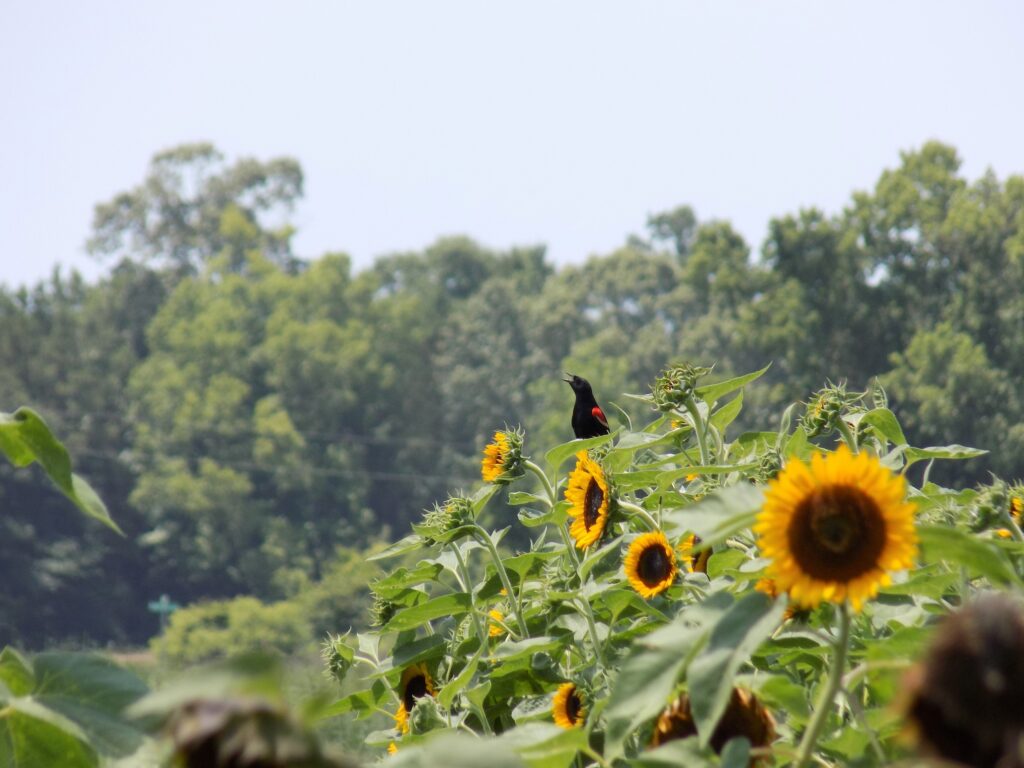
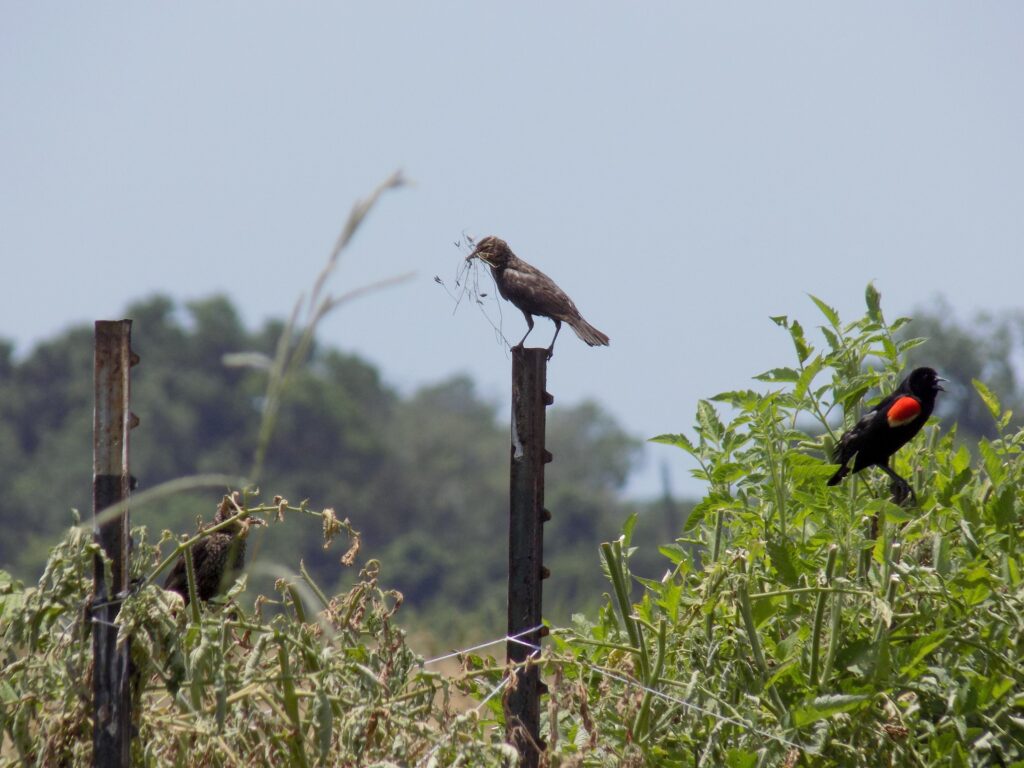
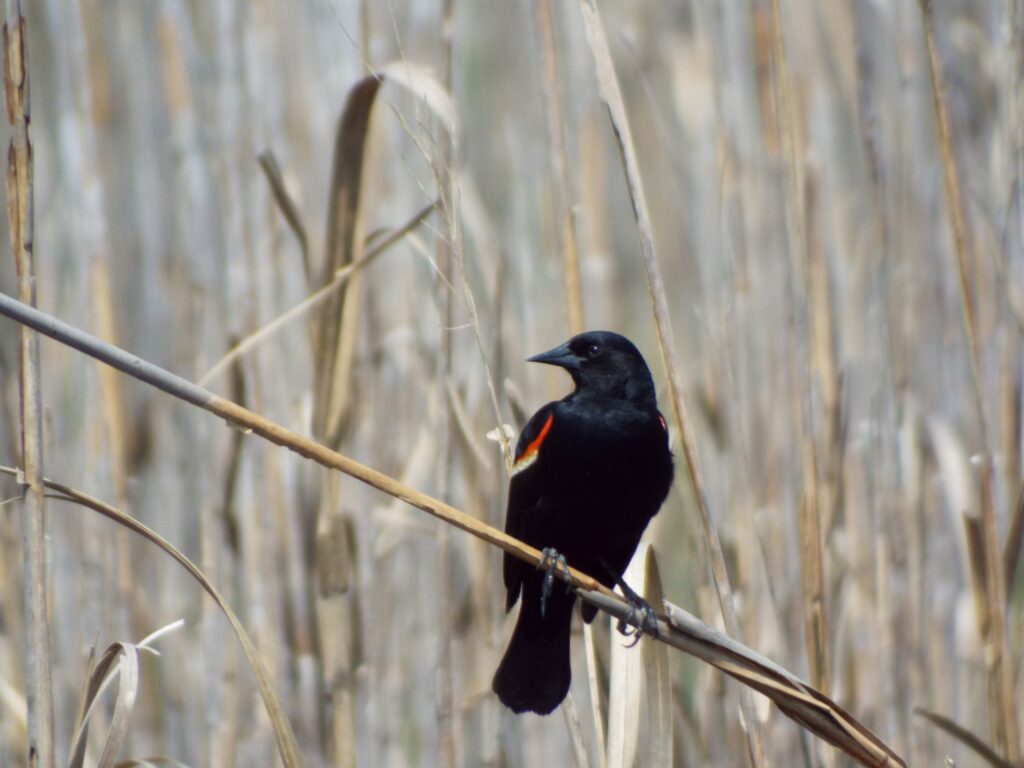
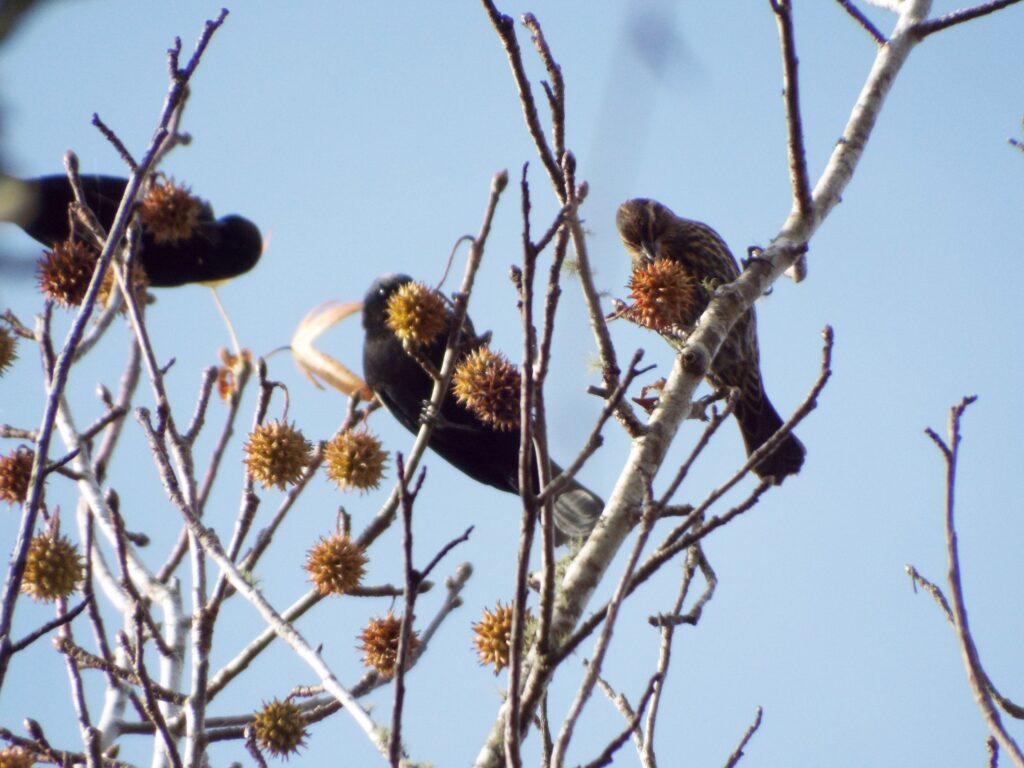
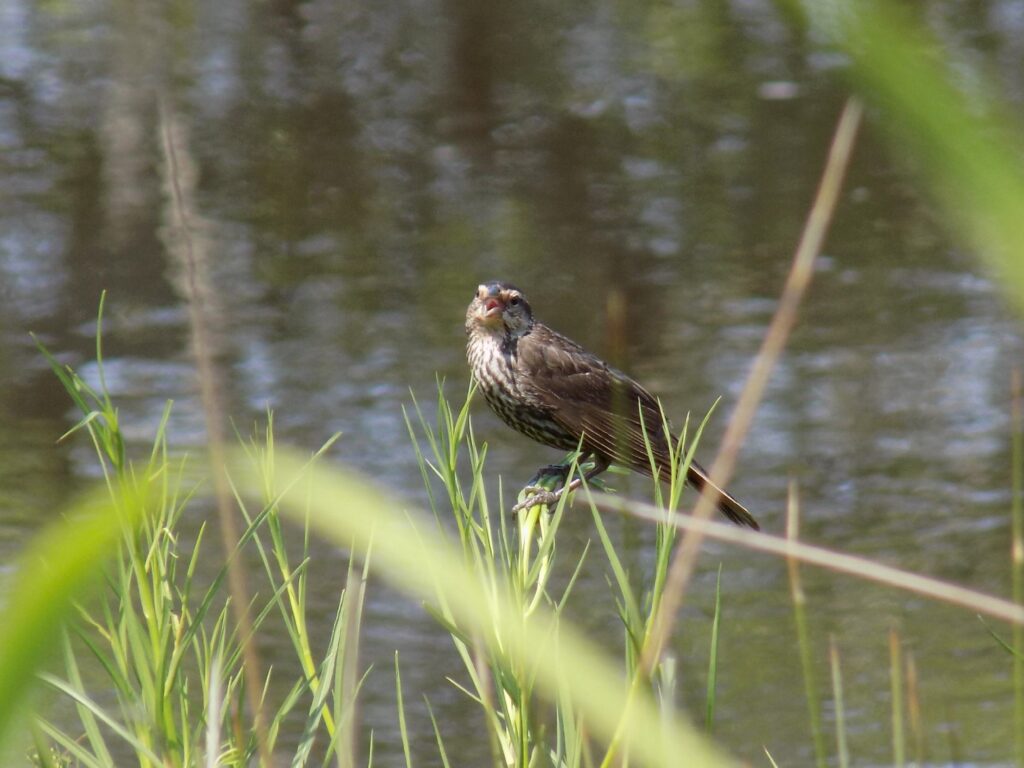
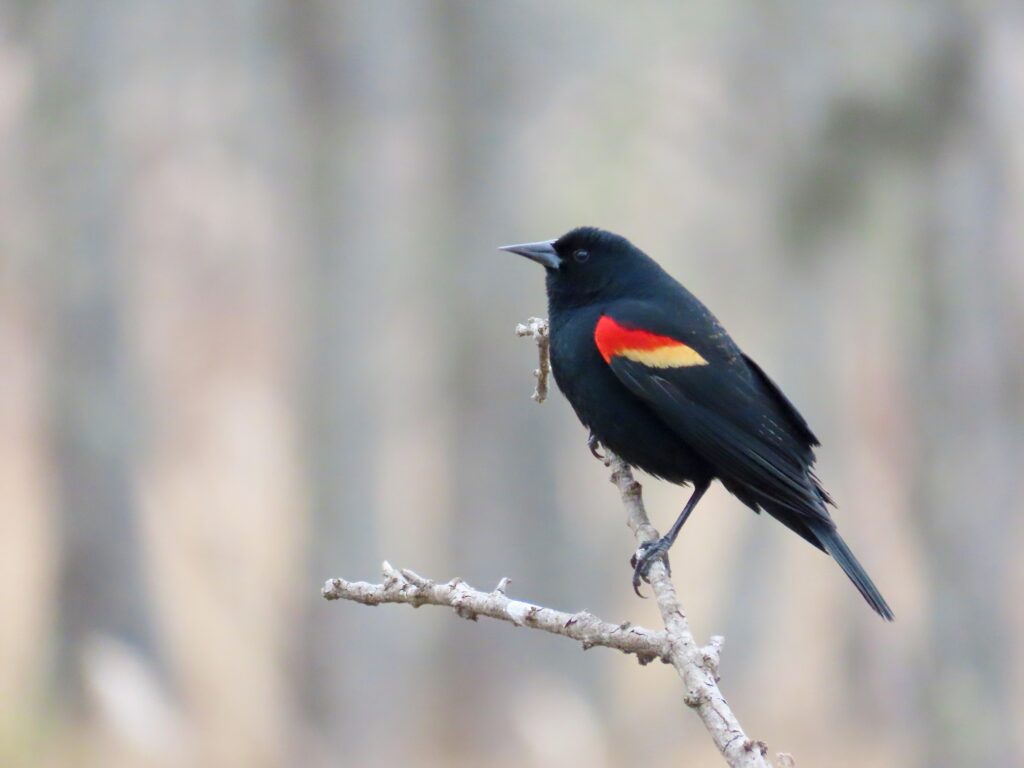
This week for Flora and Fauna Friday we have a prolific songbird of both marsh and farm, the Red-winged Blackbird (Agelaius phoeniceus).
A sharp “chek” cracks the air before a torrent of bassy buffeting floods the ear. A rolling cloud of undulating black hoists itself out of the marsh and onto the horizon. Waves and ribbons of sporadic shadows twist and break over the canvas of the sunset. Birds in bulk escape their roost and whisk themselves away into the curtains of twilight. The ascent of a murmuration of Red-winged Blackbirds is a universally awe inspiring event. From a totally unseen position hundreds, thousands, on ten-of-thousands of birds rise into the air in one continuous stream. They darken the sky and smother the senses in a captivating display.
The Red-winged Blackbird is an especially common songbird year-round throughout the wetlands, farmlands, and marshes of the Lowcountry. They can be found in numbers of any scale, from a single soul to the uncountable murmurations of the marsh. Salt marshes and farm ditches are probably the easiest places to spot them. They’re not hard to spot either, as males love to perch atop a stalk of grass or fence post and blurt their curt calls and aggressively bubbling song at any and all who will listen. The male is stately and handsome; brilliant saffron fringed ember-red shoulders blaze down in contrast to his umbral plumage, shadowed by the blue of the sky. Females are much more practically plumed, with brindled walnut and cream and gildings of gold on a penumbral black base. Red-winged Blackbirds feed mainly upon the ground eating seeds and grains as well as an unlucky arthropods they descend upon. A Female Red-wing builds her nest by weaving grasses together around the stalks, blades, and branches of vegetation, creating a funnel suspended in the air. As a species, they prefer to nest above water in marshes but will just as readily spin a cradle over the drainage ditch of a promising corn field.